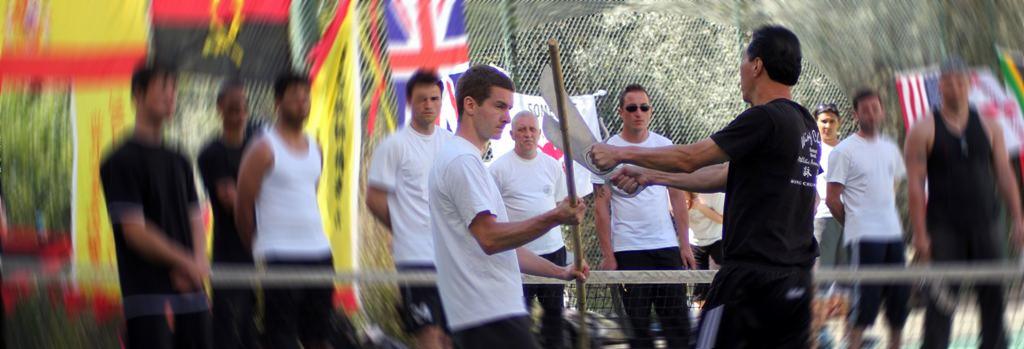Fak Sau - Wing Chun technique
Article by Dan Knight added on 30 Aug 2012. Last updated on 9 Oct 2012.
The Technique - Fak Sau
 The Fak Sao is a Wing Chun technique that can be used as a
block or attack. The practitioner uses the outside edge of the hand to deflect attacks or.
strike the opponent. Usually in the neck.
The Fak Sao is a Wing Chun technique that can be used as a
block or attack. The practitioner uses the outside edge of the hand to deflect attacks or.
strike the opponent. Usually in the neck.
In the Forms
First appearance in the system:
Sil Lim Tao, done with both hands in the second section.
Other appearances in the forms
It is also seen in Chum Kiu, Biu Gee and throughout the wooden dummy form (Mok Yang Jong).
Applications
As a cover
Fak Sau is ideally used as a block or cover in Wing Chun when attacks are coming in from the side. The Fak Sau can be used to stop attacks from the front but other techniques like Biu Sau generally do a better job of this. So what is special about Fak Sau? As a cover it lets you protect yourself from attacks that are not coming through your centreline (in-front of you). Instead of turning and then performing a technique to deal with these attacks the Wing Chun practitioner can throw out the Fak Sau first to cover the attack sooner before turning to properly deal with the assailant. The Fak Sau has some similarities to the Mann Sau technique seen in the third form except a Fak Sau is generally straighter and does not arch to its target like the Mann Sau.
As a strike
Fak Sau is ideally used as a strike in Wing Chun against your assailants neck after some thing like a Lap Sau. The Fak Sau strike should stay just above the assailants arm to ensure a controlling position is maintained and countering it is harder. Fak Sau can also be used in conjunction with deflections like the Pak Sau.
In Chi Sau
Fak Sau can be used in Chi Sau to both cover attacks against you and to attack the opponent. Fak Sau is an essential element of Chi Sau and is often used to start attacks after performing a Lap Sau from your Bong Sau. The Fak Sau is an essential part of doing Fan Sau in Chi Sau (or sparring).



